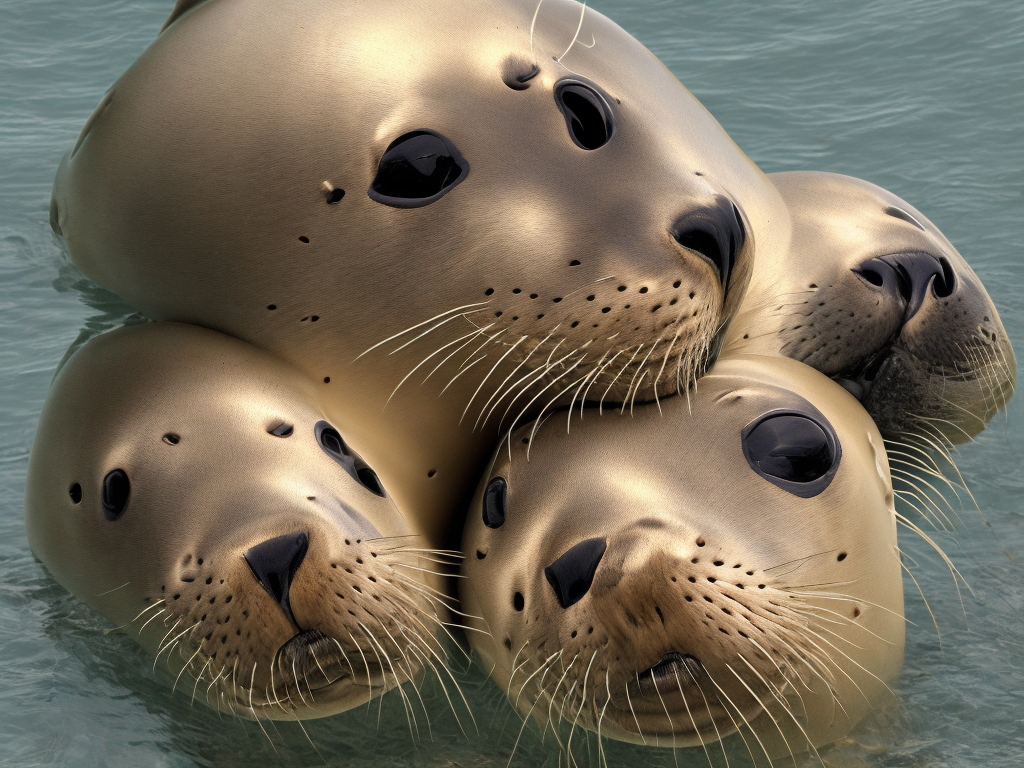
Seals and sea lions might look similar at first glance, but there are significant differences between the two marine mammals. They both belong to the pinniped family, which means "fin or flipper-footed," and are found in oceans, rivers, and lakes all over the world. Despite having a lot in common, seals and sea lions differ in many areas, including their appearance, behavior, habitat, and sound.
Appearance
One of the most noticeable differences between seals and sea lions is their outward appearance. Sea lions have long, muscular front flippers that enable them to walk on land, climb rocks, and even jump through the air. They can use their hind flippers to steer themselves, and their powerful jaws have visible teeth, allowing them to hunt prey such as fish, squid, and octopus.
Seals, on the other hand, have shorter front flippers that they mainly use for steering while swimming. They can't walk on land as smoothly as sea lions, so they prefer to crawl on their bellies. They have hind flippers that point backward, making them great swimmers but not well-suited for movement on land. Seals have sharp teeth, but they are not visible when their mouths are closed, and they mainly rely on suction feeding or using their strong jaws to crack open shells.
Behavior
Another significant difference between seals and sea lions is their behavior. Sea lions are quite social animals and often congregate in large groups called herds or rafts. They are highly vocal and communicate with each other using a wide range of sounds, including barks, grunts, and growls. Sea lions are active and like to play, whether it's in the water or on land. They can jump up to heights of 6ft and even perform tricks using their flippers.
Seals are more solitary creatures who prefer to keep to themselves, although they will come together in small groups during breeding season. They are generally silent, and their vocalizations are limited to grunts and groans. Seals are less active than sea lions and spend most of their time resting on rocks or floating in the water. They have a slower metabolism than sea lions and can go for extended periods without food.
Habitat
Seals and sea lions inhabit different areas of the world’s waters. Sea lions are found in tropical and temperate coastal waters of the Pacific Ocean, from California to Peru, and on the Galapagos Islands. They prefer rocky, rugged shores where they can rest and bask in the sun, although they also hunt in open sea.
Seals have a broader range of habitat than sea lions, and they can be found in every ocean on the planet. They also inhabit freshwater lakes and rivers, such as the Great Lakes in North America and Lake Baikal in Russia. Seals prefer to live in colder, more remote regions, such as the Arctic, where they can find suitable prey and avoid predators.
Sound
Seals and sea lions communicate in different ways and produce distinct sounds that are characteristic of their species. Sea lions have a louder and more varied vocal repertoire than seals, and they use different calls to express various emotions, such as aggression, submission, and affection.
Seals are more limited in their vocalizations, and they generally produce sounds using their breath rather than vocal cords. They can hiss, snort, and growl, and some species, such as the harp seal, can produce a distinctive trilling sound.
Conclusion
In summary, seals and sea lions might look similar, but they are separate species with unique characteristics. Sea lions have long front flippers, visible teeth, and are social, vocal, and active creatures that inhabit coastal waters. Seals have shorter front flippers, sharp teeth hidden behind their lips, are solitary, less active, and are found in more remote, colder regions. Both are fascinating animals, and their coexistence is a testament to the diversity of life in our oceans.
 Self-Instruct
Self-Instruct